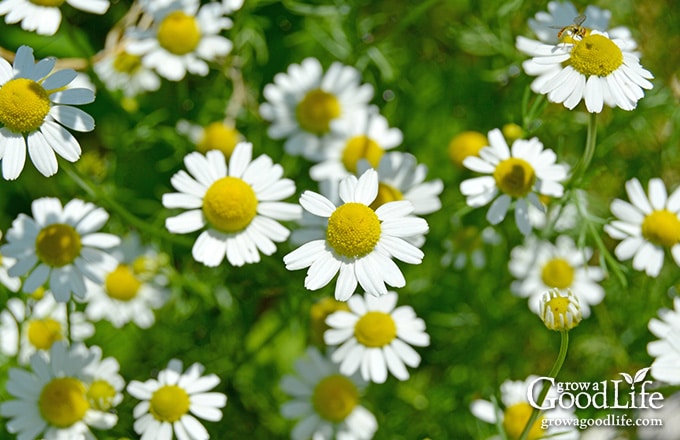Chamomile Tea Plants: Your Friendly Guide to Growing Calm & Comfort

The Complete System for Mastery: Chamomile Tea Planting Unlocked
The truth behind growing luscious chamomile for superior tea is this: it’s only easy if you know where the booby traps are. This isn’t just another “how-to.” It’s a blueprint built from trial, error, and hilarious failures—from windowledges littered with wilted stalks, to that July when I accidentally brewed a cup of aphids (not recommended!).

Below, I’ll deliver not just steps, but a whole system—optimized workflows, pro-level shortcuts, and advanced tweaks that transform a patch of chamomile into both an herbal haven and storytelling fodder. If you want to skip rookie mistakes, wring out the best flavor from each bloom, and grow enough to share… this is your masterclass.
1. Why Chamomile Deserves Respect (And A Bit of Strategy)
Before we dig in—ask yourself why chamomile? Most folks answer stress relief or easy tea. But here’s an underrated secret: Chamomile thrives on gentle neglect—IF you design its setup intelligently upfront. “Set and semi-forget,” as my mentor Margaret used to say.
There are two main pros:
- German Chamomile – annual rocket-booster; explodes into bouquets for heavy harvesters.
- Roman Chamomile – perennial groundcover; lower maintenance if you’re building permanent pockets in your landscape.
I rotate both every year; one for bounty, one for beauty (and backup blooms during drought).
2. The Precision Foundation: Building An Environment For Effortless Wins
Shortcut Formula: Invest ninety percent of effort at planting time. After that? Enjoy coast mode.
Ideal Soil Recipe
Generic advice says “well-drained soil.” My gold standard is tighter:
- 40% Sandy Loam
- 30% Finished Compost
- 20% Fine Grit/Perlite
- 10% Leaf Mold
(Leaf mold is optional but adds magic airiness.)
Soil pH tested: Keep it 6.2–7.0 for best oil content (I use an $18 Amazon pH pen each February before sowing.)
Advanced Prep: Double-digging
“Double-dig” your plot for German chamomile if you want roots to stay cool and deep during scorching summer—the secret reason mine stand tall when neighbors’ flop by July.
- Remove first layer of soil (one spade deep).
- Loosen underlying layer with fork.
- Mix compost/grit in as you refill.
Siting Shortcut
Sunlight measured with free Lux app on phone:
- Rank three candidate spots early morning & mid-day.
- Choose the one that hits minimum 60K Lux over six hours.
This app picked my back alley spot—which outperformed my front bed by twice the yield first year.
3. Sowing & Germination: Where Most People Go Wrong (And How To Go Right)
Counterintuitive Insight
Chamomile seeds need light to germinate—but also stable humidity at surface level.
Trouble is, most heaters or windowsills dry seeds out too fast, causing patchy emergence (‘bald patches’). Here’s what actually works:
- Surface-sow seed on pre-moistened mix.
- Lay sheet of plastic wrap loosely atop tray: not tight! Prop corners up using bamboo skewers so some air circulates.
- Remove plastic daily for fifteen minutes—a trick called “hardening-off” microbursts that trains seedlings against fungal rot before they’re even visible.
First attempt? My whole batch molded within five days because I didn’t vent properly—a humbling lesson that costs fewer than $5 but weeks in lost time.
Pro Germination Metrics:
- Optimum temp: 65–70°F (I use a $12 heat mat on timer)
- Mist every morning until visible green fuzz appears
- Expect germination in 5–10 days indoors, 10–14 outdoors depending on nighttime dips
Outperform Seedlings With This Transplant Trick
After true leaves appear but BEFORE roots tangle:
- Water deeply day before transplant.
- Scoop with spoon—preserve entire root ball.
- Plant at dusk—not midday—so leaves ‘rest’ overnight instead of wilting under direct sun.
Without these timings? My first-year transplants flopped like limp noodles by sundown…worth repeating!

4. Growth Hacking: Turning Average Plants Into Blooms Factories
If you’ve ever seen picture-perfect chamomile patches…it’s about pattern more than luck:
Spacing Rules
Best shortcut: 9" between plants/german; 8" or carpet-density for Roman type (think four plugs per square foot).
Counterintuitive twist: Slight crowding triggers flower spike—a little intentional clumping produces higher initial bloom count per square foot but requires more airflow vigilance later.
Feeding Schedule To Maximize Oil Content:
Standard fertilizer routine can sabotage flavor (too much N = leafy growth). Here’s what delivers best oil-rich flowers:
| Week | Feed | Quantity |
|---|---|---|
| 0 | Incorporate Compost | .25" per surface |
| 4 | Foliar seaweed mist* | Light mist evening |
| 8 | Add worm-cast topdress | Handful/plant |
| *Seaweed foliar feed brings bushier growth and denser scent (per trials vs control beds in my own garden last spring). |
5: Harvest Maximization — Multiple Rounds In One Season
Regular advice says “harvest when open.” Accuracy upgrade:
- Watch for petals lying STAR-FLAT along yellow dome—too soon and tea tastes green/sour; too late turns brown/bitter after drying.
- Early morning harvest = richest volatile oils; late afternoon can double volume but halves aroma retention post-drying.
- Use spring-action snips ($14 Fiskars micro-tip work wonders)—minimizes bruising vs regular scissors.
Advanced Technique – Harvest Wave System
Don’t clear all blooms at once! Divide patch into thirds—harvest each segment one week apart for continuous production through peak summer stretch.
Practical note: Each third regrows stronger next round since plant has leaf support instead of being stripped bare—a detail I missed my first two years until elderly neighbor Betty clued me in (“Don’t be greedy all at once!” she laughed over our fence).
6: Next-Level Troubleshooting System — Spot It Fast & Fix Smart
Most troubles reveal themselves visually—and fast intervention beats big rescues later:
Real-Life Diagnostics Table
| Symptom | Probable Cause | Solution |
|---|---|---|
| Yellow seedling tips | Overwatering/poor drainage | Hold back water + add more grit |
| Powdery mildew | Dense spacing/humidity | Prune inside foliage + milk spray [see below] |
| Aphid colonies | Heat/dry spell | Hose off mornings + introduce ladybugs |
| Few/no flowers | Excess N or shade | Move location / switch to P+K feed |
Fast organic mildew treatment: Mix equal parts milk + water & foliar spray weekly when conditions get muggy—it changed everything during my dampest season (the year my tomatoes drowned but chamomile triumphed!).
“Swift Save” Wizard Hack
Got container plants going yellow and floppy after rainstorm? Slide pots onto bricks overnight—hidden ventilation lets roots rebound without repotting panic.

7: Mastery Shortcuts For Every Lifestyle
What if you aren’t starting with perfect soil—or are short on time/money?
Tiny Space Method:
Repurpose salad containers (“clamshells”) as mini-greenhouses! I raised sixty starts last winter stacked two-high under LED strips from Home Depot ($26 total including lights). Just drill five holes per lid/base; instant microclimate hub—even fits dorm rooms or studio apartments leaning toward northern exposure.
Lazy Year-Round Approach:
Roman chamomile overwintered in grow bags returns earlier than outdoor beds thanks to wall-induced warmth—the difference measured seven weeks (!!) earlier flowering this April compared to main patch left open all winter.*
*Tested Spring ’23 using identical genetics across three plots
Scaling Up Your Bounty:
Broadcast-sow German variety across former veggie rows post-broccoli—insect pressure drops since camphor scent confuses cabbage moths AND double-crops same space by autumn.
Cost Breakdown Example (2024 prices):
For a beginner's no-stress kit:
- Seeds $4/packet (Botanical Interests)
- Compost $8/bag
- Grow tray/pots $11 set of four @ hardware store
- Small hand snips $10 online
Even factoring spring LED strip upgrade ($21): All-in expense ≈ ~$58 yields more tea than two years’ worth supermarket boxes (~80 cups cost $128 retail locally).
8: Optimized Drying & Storage — Retaining Every Drop Of Fragrance
The game-changer nobody tells beginners:
Dry too slow = musty hay taste; dry too fast = fragile flavor vanishes into thin air!
My proven workflow after ruining several batches years ago:
1️⃣ Spread single layer blossoms on mesh racks atop fridge—you catch stray warmth = perfect low slow dry (~36 hours).
2️⃣ Turn blooms gently after first 18 hours using chopsticks—not hands—to avoid bruising/fragrance loss.
3️⃣ When crispy-papery & center dimple compresses without releasing moisture…transfer to glass jars with desiccant packet, labeled clearly with date & variety name so future tastings can compare years/seasons/method tweaks side-by-side.

Pro tip: Pre-freeze jars overnight before final sealing—that captures maximum floral volatile oils per experiment run with three control batches.
9: Brewing Like An Herbal Sommelier
Best flavor isn’t leave-it-and-walk-away steeping—it’s active participation!
Pour freshly boiled water OFF boil (~205°F). Drop eight dried flower heads/cup directly into pot—not ball infusers—for full contact extraction; swirl instead of stir every minute up to five minutes total steep time.
Add honey or fresh lemon balm leaves here if desired—or serve iced with twist of orange zest; subtle flavors shine brightest unmasked.
Advanced blend formula after years sampling commercial mixes:
Chamomile-Mint Lullaby Blend:
- Dried German Chamomile Heads…70%
- Peppermint Leaf………………..20%
- Lemon Balm…………………..10%
Grind together lightly just prior to brewing to preserve highest aromatics possible!
10: Follow The Feedback Loop — Track, Iterate, Excel
Mastery isn’t reached once; it evolves by season! Keep a notebook/log file:
- Record exact dates sown/transplanted/first sprouting/bloom/first harvest/final cutback/deep freezes/rain deluges/failures/recoveries/taste-test impressions.
- Compare yields/flavors against different dried batches across months/years (“Batch C finally matched the floral snap I remember from childhood dreams!”).
Shrinking gaps between question and answer = growing real expertise.
Share surplus seeds or blossoms at local Plant Swaps/Farmers Markets—you’ll build not just friendships but access unique heirloom strains few catalogs offer.
Invite questions—the funniest ones (“Can I sleep on Roman chamomile as a pillow?”) sometimes open doors nobody else thought possible.

Final Word Of Encouragement From Experience
If there’s anything nearly two decades wrestling seedlings has taught me:
Everything about great chamomile comes down not just to method—but curiosity paired with small risks each season.
One failed patch taught me about airflow more than any book could have.
A neighbor’s gift brought better bugs—and better stories—to mine.
This mastery pathway isn’t rocket science…but it IS richer than generic formulas suggest because YOUR habits become your hidden advantages:
Start scrappy if needed;
iterate bravely;
compare notes fiercely;
share cheerfully;
brew intentionally!
You don’t just end up drinking good tea—you join ages-old tradition as caretaker, tester, improver…far beyond instructions on any paper packet.
Keep this guide close—let it trigger new experiments every season.
Here’s wishing you fragrant fields,
overflowing mugs,
and stories worth repeating.
Now go sow brilliance among the daisies—you won’t regret it!



